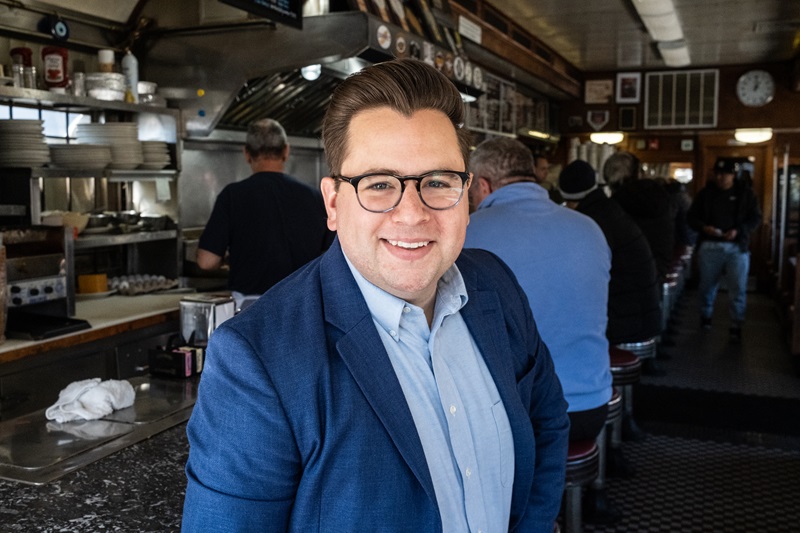You are here:
In the Spotlight: Greg Vartan ’15

Greg Vartan ’15 first became interested in politics after being elected president of Student Senate at Lycoming College. Today, he is employed by Ansell Healthcare as Sr. Territory Sales Manager, EMS/Government, while running for Congress in New Jersey. “I fell in love with the idea of making my life about making the community better for my fellow students and now my neighbors,” he said.
You earned a dual degree in criminal justice and political science as a student at Lycoming. What drew you to that combination of majors?
My plan was to pursue a career in law enforcement. After being elected president of the Class of 2015 and then president of the Student Senate, my ambition turned toward politics, so I added the second major. What I learned in the classroom as well as real-world experiences have been invaluable in my professional and political life.
You were an integral part of student life during your time on campus as president of Student Senate. How did those experiences shape your desire to serve your community through politics?
Serving as president was an honor. The single person most responsible for my election and the driving force behind so many of our accomplishments was my amazing vice president, and now wife, Megan (Cunningham) Vartan ’15. As president of the Student Senate, I learned how to listen, outline a vision for the future, and viciously pursue that vision. Student government at Lycoming was essentially hyper-local government, and I fell in love with the idea of making my life about making the community better for my fellow students and now my neighbors.
After serving your local community of Summit, N.J., for nearly six years, you are now running for Congress (specifically New Jersey's 7th Congressional District). Tell us more about your desire to run and your platform.
I’m running for Congress because this district is my home, I love it here, and I believe we deserve so much better. I have the skills, experience, and vision to deliver results for my neighbors. I served 12 years as a volunteer EMT, was elected as the youngest president of the Summit Council, and am still working a full-time job while campaigning.
I see how rising costs and extremism in Washington have threatened our way of life. I believe the American dream should be within reach for all families. My campaign is focused on the same issues we were able to deliver when I was in local elected office: lowering costs and taxes, protecting our fundamental freedoms, and improving healthcare, education, and transportation.
Why should people give back to their alma mater, and why have you chosen to give?
I was raised to believe if you have the opportunity to be helpful, you have a responsibility to do so. To me, Lycoming College is so special because there are so many people who share that philosophy. Lycoming is a place that fosters that sense of service, and we should all do our part to make sure that continues.
Tell us about your favorite memory from your time as a student as well as an alumnus.
Favorite student memory: There are too many to really pick a favorite, but three of the best in no particular order: 1) speaking on behalf of the student body at the inauguration of President Trachte, 2) mud-wrestling on The Quad for Lyco Hoco, and 3) Skeath vs. Asbury Nerf battles. Favorite alumnus memory: Marrying Megan in Clarke Chapel.
In the Spotlight recognizes members of our alumni community who are doing great things that have been influenced by their time at Lycoming College. Alumni Spotlight submissions are used at the discretion of the College and may be included in the monthly eNews as space and time permit. To participate, submit an Alumni Spotlight questionnaire.